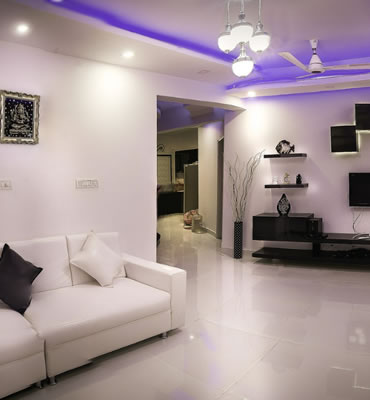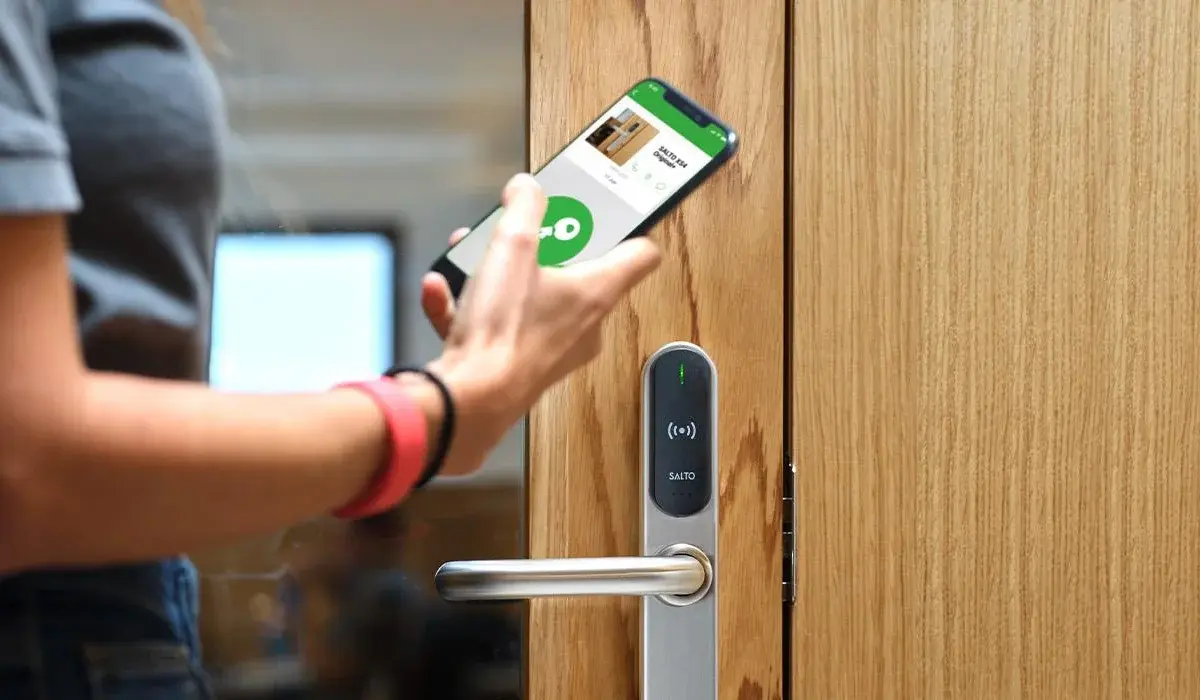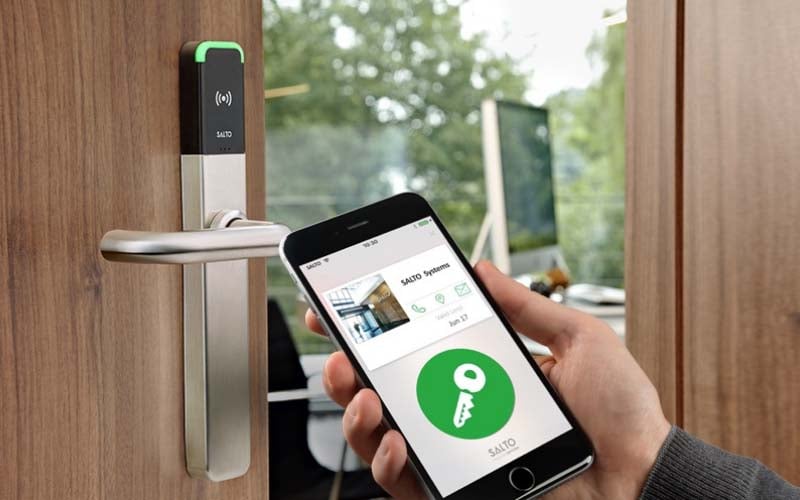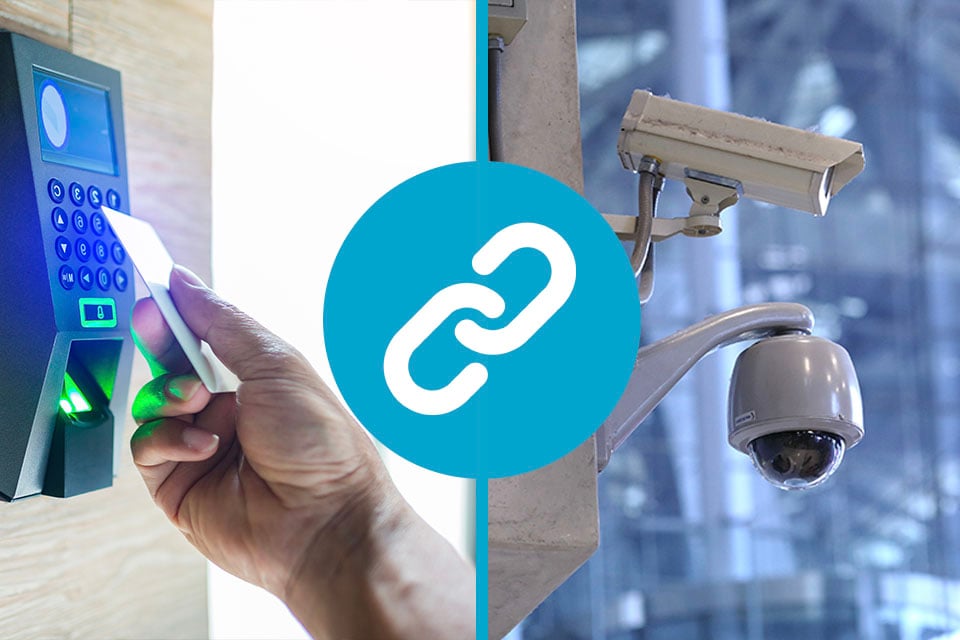Lighting. It’s not just about illumination. Lighting is a powerful element in the human experience, affecting everything from our productivity to the way we feel emotionally.
But, as we head towards a remote working future, it’s clear that most of us are missing out on our time in the sun. In fact, we spend almost 90% of our time indoors, relying on artificial lighting to illuminate our lives.
Jump To
But how can we maximise the effects of lighting in our homes? Never fear! We’ve got you covered!
In this blog, we’ll explore the relationship between smart lighting design and human wellbeing. We’ll explain the benefits of smart lighting integration on wellbeing and how you can reap the rewards of your home lighting system.

Why Is Lighting Important to Us?
There’s no beating around the bush: the evidence proves that lighting impacts us biologically, having an effect on our cognition, sleep and overall state-of-mind.
It all comes down to our circadian rhythm, the human body’s natural internal clock, which regulates our energy levels, alertness and sleep rhythm based on the lighting we interact with on a daily basis. Lighting also goes a long way in moderating psychology and improving mental health issues, increasing reaction time and stabilising productivity performance.
Though nothing sums up our body's relationship with lighting quite like the changing of the seasons. On a wet, cold gloomy day for example, we can feel more lethargic and energy-sapped, and when the sun is shining we may feel more positive, optimistic and energetic.
The winter in particular poses a challenge for those with mental health issues, with reduced lighting levels linked to Seasonal Affective Disorder (SAD), increased symptoms of depression and anxiety triggered by less sunlight interaction.
In fact, as many as three in every 100 people suffer with SAD at some point in their life according to private healthcare firm BUPA - with many using a treatment known as “light therapy” to combat this.
In a nutshell, fixed artificial lighting is unnatural and plays havoc with our circadian rhythm. As convenient as the run-of-the-mill light bulb may be, traditional lighting systems simply aren’t designed to support human wellbeing. This had led manufacturers to design a more authentic, enhanced lighting system known as human-centric lighting.
What Is Human-Centric Smart Lighting?
Human-centric smart lighting is the given-name for intelligent lighting solutions that are automated to offer adjusted lighting at the right time - based on weather, time of day, temperature and personal taste.
Modern smart lighting control systems from the likes of Lutron and Control4 offer dynamic brightness automation and colour control to maximise lighting potential in the living space.
So, how can human-centric smart lighting impact health and wellbeing in your home setting?
Mood Lighting & Hue
The term ‘mood lighting’ exists for a reason. When we spend time in a room or reception area without atmospheric lighting it can amplify anxiety and discomfort.
For example, ultra-bright, cool-toned illumination during daytime is proven to create a clinical effect, increasing tension, discomfort and unnerving those within. But it’s not just the amount of light that matters when it comes to mood and behaviour; hue and colour temperature also plays a powerful role.
Cool blue and white lights, for example, are thought to be more stimulating in working environments as they promote increased productivity and concentration. Softer, warmer tones, such as orange or yellow, are found to boost tranquility and reduce anxiety - Think: candles and Himalayan Salt Lamps, these are lauded for their soothing properties in the home.
For optimised, mood-enhanced lighting, experts generally recommend simulating natural light levels and colouration as closely as possible, to best inform the internal body clock. In doing so, your body will feel more responsive to the working hours, and be conditioned to relax in the darker hours.
Fortunately, most smart lighting systems are designed to automate this process, and are timed to reflect the natural world outside based on precise sensor detection and configuration - making this a highly efficient addition to any space.

Body Clock Regulation & Circadian Rhythms
Artificial lighting can put a real dampener on our internal body clocks. Repeated exposure can make us feel tired in the daytime hours and energised when it's time to sleep.
The reason behind this is simple: natural lighting controls the cognitive response of our brains, allowing our bodies to release the much-needed hormones that ready us for the working day; serotonin and melatonin.
Natural daylight stimulates serotonin-boosting hormones, promoting the feel-good factor and allowing us to feel more alert, motivated and highly productive during the daytime. In the evenings as light decreases, the brain’s pineal gland emits melatonin into the bloodstream, helping to synchronise the sleep-wake cycle in accordance with night and day - winding the body down and promoting tranquility before rest.
Unlike traditional lighting fixtures, smart lighting systems physically optimise and automate lighting to recreate this effect, elevating sleep quality and regulating the inner body clock. Lighting systems such as Lutron’s Homeworks can make your bedroom as dark as possible by also combining automatic blackout blinds, enriching your sleep quality and using the morning light to wake you up again naturally - giving you the energy to reach your full potential across the day.
Smart Lighting & Automated Blind Integration
Integration is the key to success with any home automation system, and smart lighting is no different.
As we’ve mentioned, natural light is a crucial element in any modern home. Not only does it help to build aesthetic, but it’s also highly-stimulating for the human sensory system. Through integration between smart blinds and smart lighting, you’ll enhance your living space by maximising the amount of natural light that enters your property.
These systems can flawlessly combine to recognise changes in outdoor lighting and accommodate with the necessary adjustments to produce a seamless, continued level of lighting in your home.
Not to mention, integration between smart shades and lighting controls can also play a role in reducing your overall carbon footprint, slashing the cost of your energy bill at the same time.
In the morning you can be softly woken up with your blackout blind slowly rising over ten minutes. Or use a sheer blind behind to soften the light coming into the room and maintain privacy for those late morning lie-ins!
Mockupancy & Safety Assurance
Feeling unsafe and insecure is a leading cause of anxiety. Though we all strive to ensure that both our family and assets are fully secured and watertight - it’s quite often the thing that we worry about most.
It’s normal to feel concerned about our homes while we’re away for long periods of time, in fact many of us go to great lengths just for that little extra peace of mind. One of the most beneficial features of smart lighting control is the mockupancy enablement - automated lighting that simulates authentic human usage patterns across the home.
Over time, burglars and other criminals have learned to monitor lighting behaviour patterns that signal occupancy. The age-old “leave the lights and TV on” is no longer a fool-proof strategy- likely presenting your home as an easy picking.
Smart mockupancy automation systems like those from Control4 use ingrained technology to mimic human occupancy, tracking your lighting usage and automating this in your home using slightly randomised timings - making it seem as though the home is occupied and active.
In short, the on-board remote monitoring system and automated lighting functionality offers an extra layer of peace of mind for homeowners, reducing anxiety and allowing you to leave your home in the evenings with added confidence.
Increased Productivity
From a commercial standpoint, an effective office lighting solution simply cannot be overlooked, having a proven effect on reducing eye strain, headaches, unhappiness and fatigue in the workplace. But, as the number of remote workers continues to steadily increase, the value of work lighting extends equally into the home setting.
When it comes to productivity, ergonomic lighting is absolutely invaluable - in fact, approximately 90% of workers are affected by computer vision syndrome from inadequate light sources and blue light emission from monitor screens.
Traditional artificial lighting has a huge part to play in this. Dim lighting tends to cause unnecessary strain on our vision, which can lead to visual blur and headaches, while high-intensity lighting is a leading cause of migraines. Either way, both scenarios lead to reduced productivity and work-efficiency.
In the same way we consider fresh air to be a strong influencer on our work-rate, natural light is essential in improving productivity through its serotonin-boosting properties.
Through tailored, specific lighting automation, you’ll be able to maintain a high-level of working efficiency without compromising on the effects of natural lighting, sustaining boosted productivity, all year round.

Final Thoughts
It’s easy to underestimate the importance of lighting in your home setup, but even easier to neglect its role in regulating our positive-thinking and wellbeing.
While our digital remote working future may mean we never return to reaping the full benefits of natural light, human-centric smart lighting solutions present a sound alternative - one that ticks all the boxes in terms of stimulation and wellness-enhancement.
At Chris Lewis, we understand the full potential smart lighting can bring to your living space. Our smart home experts are passionate about designing and integrating lighting solutions that fit your specifications, wellness goals and home aesthetic.
A Chris Lewis lighting installation is designed to future-proof any home, and our installers are keen to ensure that your smart lighting system is always meeting the benchmark in functionality and quality.
Speak with our experts about installing a smart lighting system
Submit the form below and we will be in touch shortly

Justin Rhodes
Related Posts
Chris Lewis Group Recognised as Exclusive Control4 Pinnacle Dealer
Chris Lewis Group Joins Exclusive Control4 'Pinnacle' Dealer Network The Chris Lewis Group is proud to announce its official recognition as a Control4 Pinnacle dealer, joining an exclusive group of.
What Is Smart Lighting & How Can it Benefit You?
Smart lighting is one of the most in-demand smart home features, and for good reason. If you want to add character and ambience to your home, it can make a huge difference without too much cost. But.
How Much Does a Smart Home Cost?
As experienced smart home installers, we often get asked one key question: How much will it cost? While design and installation costs will naturally vary from project to project, we understand that.









